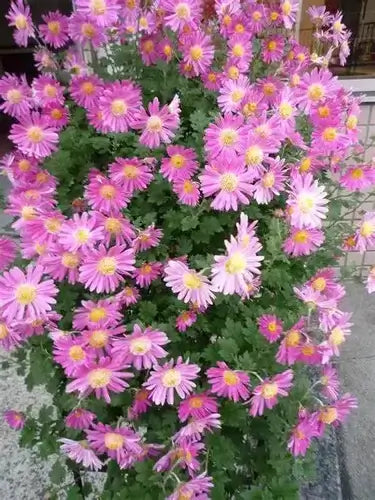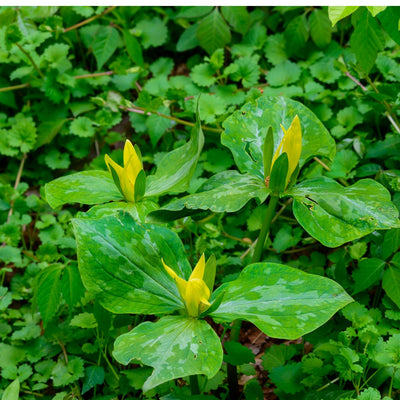Big And Bold Perennials
Do you want your garden to be breathtakingly beautiful, with stunning colors and textures? Perennials are the perfect choice for adding some flair to any outdoor space! Not only do they require little maintenance once they're established, but they can also offer bold shades and striking foliage that will help create an unforgettable scene. Ready to learn how to incorporate big and bold perennials into your garden? Read on to find out more!
Having big, bold perennials in your garden is a great way to create a beautiful, eye-catching display without spending a fortune. To achieve this look, start by selecting plants well adapted for your region - considering the soil type, annual rainfall, temperatures, etc.
It would help to choose varieties that can reach the heights and widths you need. You may have to grow them from seed or wait a year or two for the seeding of existing plants before they will reach the desired size.
Here are some big and bold perennials for your garden to create a vibrant oasis.
Jack In the Pulpit
Jack in the Pulpit has numerous other names, such as Indian Turnip, Memory Root, Brown Dragon, starch wort, and the Wake Robin. This perennial has a unique style that will add interest and charm to your yard.
This North American species is a herbaceous perennial. It was first discovered in the moist forests in the United States from New England and spread into the Great Lakes to the plains and south up to Florida. Gardeners use it in their shade gardens across nearly every USDA cultivating zone.
This woodland wildflower reaches a height of between one and two feet.
Though it is not a problem in colder areas, the distinctive plant has a tropical appearance
The Jack-in-the-pulpit consists of one to two leaves, either green or green-and-purple, originating near Jack's bottom. Each leaf is divided into three similar-sized leaflets. They fold up to create an umbrella-like design. Blooms appear at the peak on the stem, with numerous tiny red, purple, or purple colors that display their hues in the first to middle of spring.
Yellow Trillium
Yellow Trillium, also known as Trillium also known as yellow wake robin, is a flowering plant that is part of the scientific family of plants called Melanthiaceae. The flowers thrive in the hardy plant zone 4-7, including regions such as North Carolina, Tennessee, Kentucky, and Georgia. There are also remote areas where the flower grows, such as Northern Virginia, Michigan, Maryland, Pennsylvania, and Ontario, Canada.
The stunning yellow flower is commonly utilized as a decoration plant in gardens and yards across vast central and northern United States swathes. The yellow Trillium is an excellent plant for the garden because it will thrive in the shade and has low maintenance requirements. As long as the plant is fertilized and has adequate water, it will perform well.
The yellow Trillium thrives in moist, rich soil that has good drainage. It thrives at the foot of deciduous trees in their natural habitat and can take advantage of the shade. The flowers multiply, taking about 4-6 months before reaching their full size and width when the conditions for growth are suitable.
The flower typically has dark green leaves and vibrant yellow flowers with three to four petals. It can grow to 16 to 40 centimeters at the peak of its maturity. The flower is a herbaceous perennial, blooming only during the early and mid-spring seasons.
Orange Daylily
Orange Daylily is a native flower from Asia; however, it has grown across North America; one of its common names is "Common Lily." Because they thrive in moist soil, it is possible to plant daylilies in places other flowers might not be ideal. Because they're "common" doesn't mean you should not put them in your garden.
They're rugged beauties that thrive in zones 3 to 9
They need little attention and can fend for themselves. The flowers are bright orange and generally huge, some as large as three and three and a half inches wide.
It is a perennial plant that produces vibrant orange flowers and emerald-green leaves in the flowering season. It forms clumps and slow-movingly spreads to cover large areas and serves as a semi-evergreen plant that acts as a ground cover. It is exceptionally hardy to cold, but it's likely to bloom early in mild winters. It is a beautiful plant in your garden due to its vibrant, vivid bloom that can bring you into the summer and spring months.
They thrive in soil that is well-drained and moist and can bring a variety of stunning shades of color when in bloom. They are easy to rise and beautiful perennials that grow yearly following their planting. They generally grow thicker than they did the year prior. They give a natural appearance and feel and look stunning when they are added to gardens or natural zones.
Orange Day lily is well-known for its vibrant, bright orange blooms, which you might observe growing along the country's roadsides. It is a tough plant that can adapt and thrives excellently in virtually every kind of soil, in the shade or sun gardens.
Dianthus Plant
Dianthus plants are stunning, durable, long-lasting, and ideal for growing in the garden. These flowering plants (Dianthus spp.) are called "pinks." They belong to a plant family with carnations and are distinguished by the spicy scent of flowers. Dianthus plants can be found as a hardy annual and a biennial or perennial, typically used as a border or potted display.
The plants are tiny, typically between 6 to 18 inches (15-46 cm.) tall. Dianthus flowers usually come in salmon, pink shades, white and red. The leaves are slender and scattered on the large stems.
The plants are small, typically between 6-18 inches (15-46 cm.) tall. Dianthus flowers usually come in salmon, pink or white shades. The foliage is thin and scattered on the large stems.
Bluets
The botanical name for this plant is Houstonia pasilla. The other words it has in the local area are "Tiny Bluet" and "Small Bluet '' due to their dimensions. A few elements that favor Houstonia pusilla are the selection of zones for planting and the amounts of shade or sun required, the time of blooming and the color, the Height at maturity, and the soil types needed, to name just a few. It naturally grows into huge patches that require minimal maintenance.
The plant's flowers bloom in zones 3–8 of the planting zone. The experts recommend moderately watering this plant to encourage its colossal development.
Mature Height The plant usually flowers to a maturity height that ranges from 6.1 up to 8.0 inches and 8.0 up to 10.1 inches in width. Gardeners should propagate the plant from seeds. If the gardeners sow it directly, it will grow into large clusters.
These Big And Bold Perennials In Your Garden flower abundantly within their rosette-like basal structure and form a beautiful layer of blue-violet blooms. They're easy to transfer by digging up the clump and moving it to the desired place. The experts recommend that you transplant after the frost has gone. The belief of many is that these flowers offer peace and tranquility during their flowering season.


